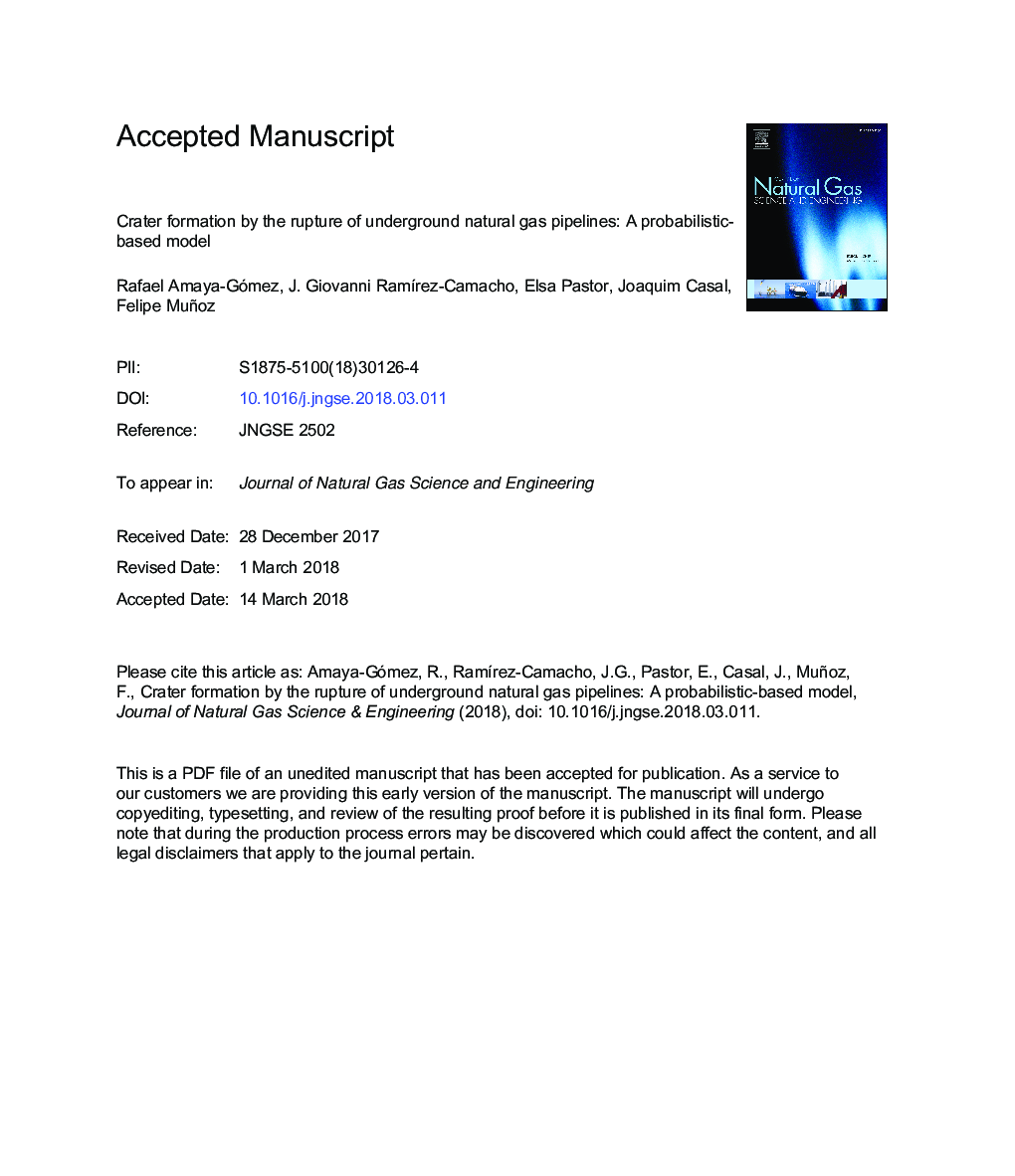| Article ID | Journal | Published Year | Pages | File Type |
|---|---|---|---|---|
| 8128111 | Journal of Natural Gas Science and Engineering | 2018 | 32 Pages |
Abstract
Parallel and crossing pipelines are frequently implemented due to land-use restrictions and their ease of operation and maintenance. Given the proximity of these pipelines and the hazardousness of the substances they transport, an eventual Loss of Containment (LOC) in a parallel/crossing corridor can lead to a domino effect that should be considered in Quantitative Risk Analysis (QRA). For underground pipelines, this LOC is accompanied by a formation of a crater, which can uncover adjacent pipelines triggering a domino effect scenario to take place. This paper aims to develop a model to predict feasible crater dimensions (i.e., width and depth) from a LOC in underground natural gas pipelines using operational and structural parameters. For this purpose, a recent review of 57 underground natural gas pipeline accidents were considered in a probability-based approach once data was processed. This approach initially predicts the Width-to-Depth crater ratio (WD) using a multivariate regression. Then feasible crater dimensions were determined using the regression prediction interval and the width-depth joint probability function, which is approximated with a Gaussian copula. This approach proposes a worst, mean and less severe scenarios to support decision-making processes regarding parallel or crossing underground natural gas pipelines with a LOC. Besides the identification of domino effect scenarios, this information can be used to support pipeline segmentation for risk analysis or even to support Right-of-Way (ROW) definition during pipeline installation.
Related Topics
Physical Sciences and Engineering
Earth and Planetary Sciences
Earth and Planetary Sciences (General)
Authors
Rafael Amaya-Gómez, J. Giovanni RamÃrez-Camacho, Elsa Pastor, Joaquim Casal, Felipe Muñoz,
